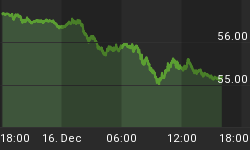
If you ever have the chance to travel through Moscow, we would recommend experiencing the local "Metro" subway system. The local trains aren't much different than the ones in New York or Chicago, but the various underground stations are fascinating. Many of the larger downtown stations are known for their sculptures and mosaics which were built during Soviet times. The sculptures are, more or less, a showcase for communist propaganda depicting the so-called "glory" of the proletariat.
If you live in America, the subway systems are not really a good place to visit if you are looking for propaganda. Instead, we would suggest tuning your television to any financial news network. If you are not the "television" type, just log onto any major news website for the printed version. Finally, if you want to hear it from the horse's mouth, check out the Bureau of Labor Statistics website for the latest economic numbers.
Don't believe us? Then please tell us why every economic statistic or earnings announcement is cast in a positive light. If a company's earnings drop, the news may still be good because the actual number is "ahead of Wall Street's estimates". Even if the results are below Wall Street's expectations, the media will come up with an adjusted "pro forma" earnings number. If the earnings cannot be adjusted positively, then perhaps the results aren't newsworthy. On the economic front, the story is the same. If national employment numbers suffer, then that means we are more productive as a society requiring less manpower. If oil prices increase, that is good because Exxon and Chevron are members of the S&P500. If the trade deficit balloons, it means that foreigners are excited about investing their capital in U.S. securities markets. If inflation increases, it means pricing power is here and that is good for corporate earnings. If inflation decreases, well, that's great for consumers who will have more purchasing power. Likewise, low inflation means low interest rates, which will continue to fuel America's epic housing boom.
Speaking of inflation, we haven't even gotten started talking about how the calculation itself is so hedonistically flawed. The Consumer Price Index, which is what the Bureau of Labor Statistics uses to measure inflation, is a joke. It reminds us of old Soviet economic broadcasts of thriving wheat production when, in reality, their people were starving. Speaking of starvation, did you know that many government entitlements are tied to the CPI number? And if the government can keep this number low, well, you know what that means. Why do you think a "solution" to social security lies in indexing benefits to inflation rather than wages? It is because the government knows they can always understate inflation. During the Clinton years, the government decided to "adjust" how inflation was calculated. According to Gillespie Research, this adjustment may be around 3%. So while CPI today may be reported around 3%, it would be 6% if they just calculated the rate the same as before. Real rates all the way out the yield curve (including the 30-year) are negative. How is that for hopeless and shameless attempts by the Fed to keep an overheated U.S. economy running on the fumes from mountains of personal debt!
On the job front, we often complain about the monthly employment statistics given out by the BLS. Large tweaks to the so-called CES Net Birth/Death model have also had the effect of making payrolls look far stronger than they should. Year-to-date in 2005 some 463,000 jobs have magically appeared thanks to this government estimate. One should also be aware that the government has done a masterful job of hacking away at the employable base so as to keep the denominator in the unemployment rate high - this has the effect of keeping the headline unemployment rate artificially low.
Outside of Volcker, Buffett, Templeton, and a few other wise observers, most people in the country seem willing to believe the impossible. Each government talking head and Wall Street economist battles to be this era's President of the Flat Earth Society. Bogus CPI, high oil prices, runaway trade deficit, inflated jobs data, and negative real rates should combine for a nasty economic slowdown - though few are willing to cut through the propaganda to see that the writing is on the wall.
more follows for subscribers . . .
















